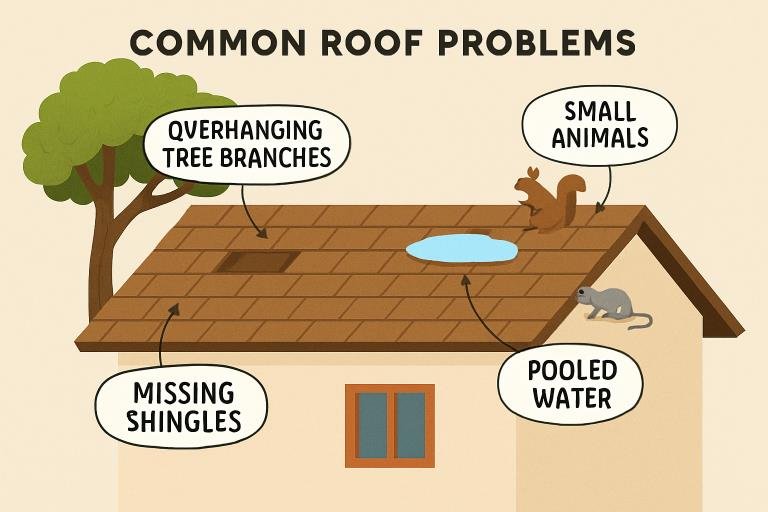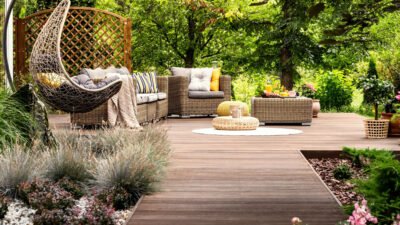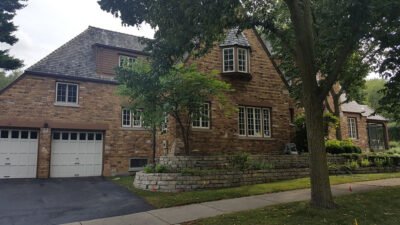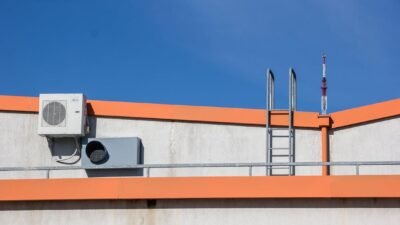Key Takeaways
- Proactive roof inspection and care help prevent expensive and disruptive repairs.
- Weather, materials, and environmental factors are the top sources of roof damage.
- Proper installation, quality construction, and routine maintenance safeguard roof health.
- Simple steps like tree trimming, attic ventilation, and animal deterrence provide strong protection.
- Partnering with trusted professionals enhances your roof’s resilience and longevity.
Introduction
Maintaining a sturdy, well-functioning roof is crucial for keeping your home safe from the elements year-round. Understanding the most frequent sources of roof damage and how to proactively address them can help homeowners avoid expensive repairs and extend the life of their roofing system. Working with an affordable roof repair contractor when issues arise ensures a professional assessment and lasting solutions tailored to your roof’s specific needs.
Timely repairs and preventive measures help defend your property’s value, comfort, and safety. From severe weather events and neglected maintenance to ice dams and wildlife, recognizing these risk factors empowers you to take swift, effective action—thereby minimizing the likelihood of severe roof damage that could threaten your home’s integrity.
Weather-Related Damage
Weather is a leading cause of roof damage in nearly every region. High winds may lift, tear, or completely remove shingles, while torrential rain can overwhelm drainage, resulting in water intrusion beneath shingles, flashing, and underlayment. Hailstorms often dent or crack roofing materials, and blizzards may load your roof structure with heavy snow and ice. After any severe weather event, inspect your roof for missing shingles, dents, or leaks. Swift repairs prevent minor weather damage from evolving into costly structural problems.
Poor Installation and Subpar Materials
Quality matters. Roofs installed with inferior materials or improper techniques are more likely to suffer from premature wear, leaks, and even partial collapse. Key issues include unaligned shingles, inadequate flashing, and missing underlayment. Always hire licensed professionals—preferably with strong local references—who understand building codes and weather conditions. Investing in durable materials like architectural shingles or metal roofing, combined with skilled installation, substantially increases your roof’s reliability and performance. According to Consumer Reports, selecting high-grade roofing materials can extend your roof’s lifespan and reduce the need for repairs.
Lack of Regular Maintenance
Overlooking routine roof maintenance is a common trigger for otherwise avoidable damage. Unattended gutters, cracked flashing, or minor punctures can eventually create significant, expensive problems. Schedule seasonal roof inspections to catch issues early. Clear gutters of debris to allow safe water flow, promptly replace damaged or missing shingles, and address any moss or algae growth. These practices and professional checkups can dramatically improve your roof’s condition and lifespan.
Tree Damage
Trees near your home can threaten your roof in multiple ways. Overhanging limbs scrape and wear away shingles during windy weather, while large falling branches have the potential to puncture the roof deck or dislodge roofing materials during storms. Prevent this hazard by regularly trimming any branches hanging over the roofline and removing dead or diseased limbs. If you notice persistent debris buildup or physical abrasions to the roof, consider consulting a certified arborist and a roofing specialist to minimize risk. The National Roofing Contractors Association offers additional warning signs to watch for regarding tree and branch-related damage.
Ice Dams
Ice dams are common in colder climates where roof warmth melts snow, refreezing at the cold eaves and blocking proper drainage. This can force water under shingles and into the home. Ensuring your attic is well insulated and ventilated helps prevent this freeze-thaw cycle. Remove heavy snow promptly and seal attic air leaks to reduce constant melting. Replacing older, less efficient insulation also helps maintain a consistent attic temperature and protects your roof in the winter months.
UV Rays and Heat Exposure
Sun exposure, especially in warmer climates, can accelerate the aging of roofing materials. Intense UV radiation breaks down the chemical bonds in asphalt shingles and causes cracking, brittleness, and fading. Metal roofs may also experience expansion and contraction stress. Installing reflective or UV-resistant materials and roof coatings designed to block harmful rays helps counteract this kind of wear and tear. These preventive strategies are crucial for prolonging your roof’s appearance and function in sun-drenched regions.
Animal Intrusion
Wildlife such as raccoons, squirrels, and birds are notorious for seeking shelter in roofs or attics. These animals can rip through shingles, gnaw on roof decking, and nest within insulation, potentially causing leaks or fire hazards. Conduct regular visual inspections and promptly seal small holes or access points to keep animals out. Chimney caps and vent covers provide added protection from unwanted visitors.
Improper Ventilation
Proper ventilation is crucial to maintaining a healthy roof system. Heat and moisture can accumulate in your attic without adequate airflow, leading to premature shingle failure, warping, or significant mold growth. Ensure soffit and ridge vents are clean, unobstructed, and correctly installed. If you notice moisture inside your attic, consult a roofing expert to increase ventilation and avoid long-term damage.
Homeowners can protect their homes and investments by learning about these common causes of roof damage and taking simple preventive steps. Routine maintenance, partnering with experienced professionals, and staying aware of your environment significantly increase the likelihood that your roof will deliver lasting protection and value for years.



